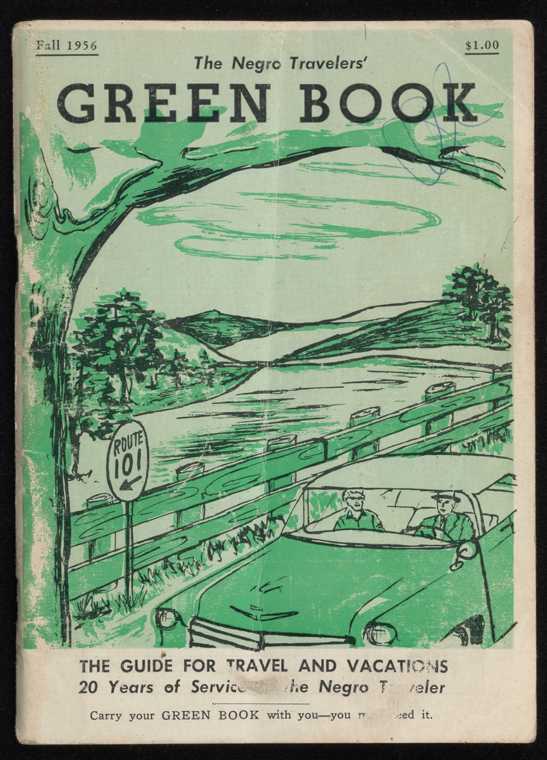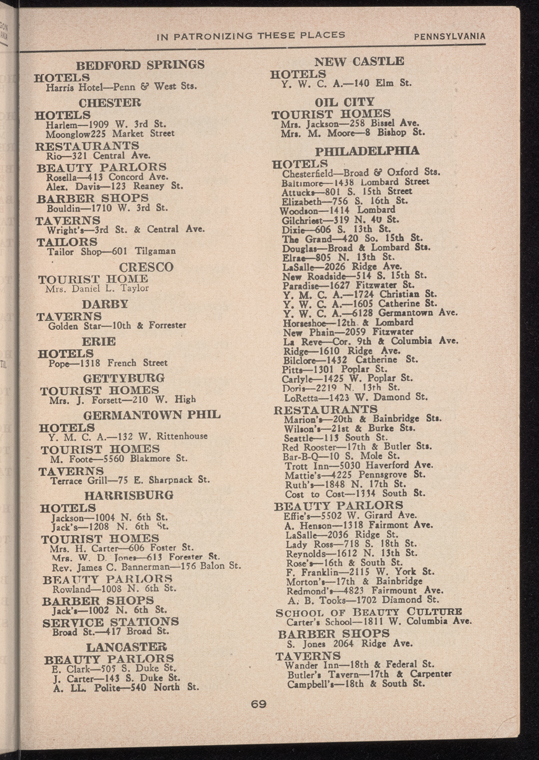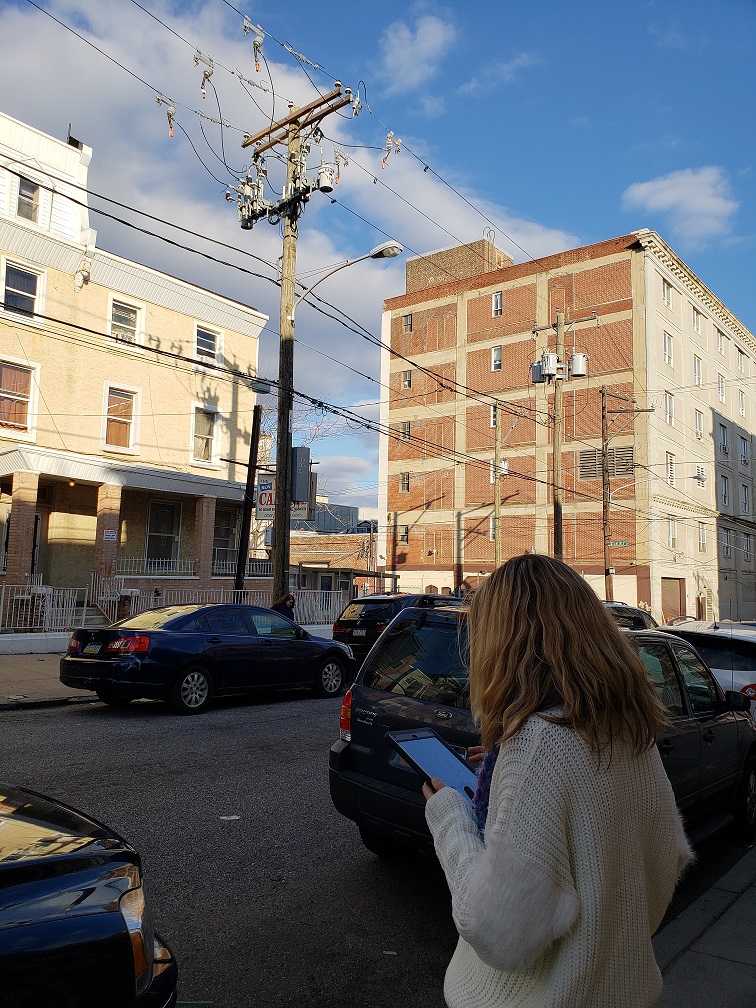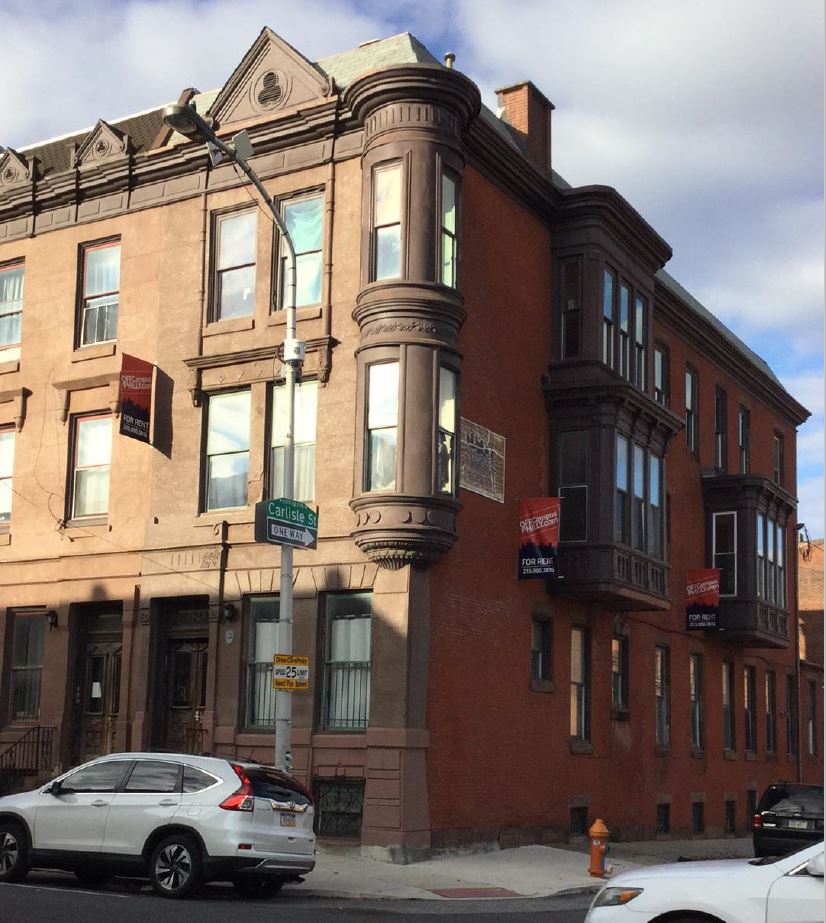Some of my colleagues are known to check their Facebook accounts while they drink their morning coffee, and on more than one occasion that has resulted in a Facebook message or email with the subject line “I have a great idea…” One of these great ideas led to one of the more interesting, informative, and eye-opening surveys I’ve done – Green Book locations in Philadelphia.
Until recently, I would argue that few born after the Jim Crow era would have even heard the phrase “Green Book.” Thanks in part to Hollywood and the award show season, a broader awareness at least of the term “Green Book” has emerged. The trailer for the Green Book film actually sparked the idea for a few of us PA SHPO-ers to find some Green Book locations in Philadelphia while we had some down time around our scheduled events.

Cover from the 1956 Green Book from the Schomburg Center for Research in Black Culture, Manuscripts, Archives and Rare Books Division, The New York Public Library. “The Negro Travelers’ Green Book: Fall 1956″New York Public Library Digital Collections.Accessed February 1, 2019. http://digitalcollections.nypl.org/items/9c454830-83b9-0132-d56a-58d385a7b928.
Negro Motorist Green Books
So, for those who may still not know, the Negro Motorist Green Book, popularly known as the Green Book, was an annual guidebook for African American travelers started and published by New York postal carrier Victor Hugo Green from 1936 to 1966.
In response to open and often legal discrimination against non-whites during the Jim Crow era, Green compiled a guide of services and establishments open to African American travelers. The first guide focused on metropolitan New York and expanded its listings to other locations the following year. Eventually, Green’s travel guide included locations in every state as well as several international destinations before ceasing publication in 1966.
“With the introduction of this travel guide in 1936, it has been our idea to give the Negro traveler information that will keep him from running into difficulties, embarrassments and to make his trips more enjoyable…There will be a day sometime in the near future when this guide will not have to be published. That is when we as a race will have equal opportunities and privileges in the United States. It will be a great day for us to suspend this publication for then we can go wherever we please, and without embarrassment. But until that time comes, we shall continue to publish this information for your convenience each year.” – Victor Hugo Green, 1949
Organized by state and city, the earlier additions included a variety of categories ranging from hotels, tourist homes, churches, and restaurants to barber shops, beauty parlors, drug stores, service stations, and taverns. As the geographic area expanded, the number of categories was reduced so that by 1959, the Green Book primarily listed only hotels, motels, and tourist homes.

One of the Pennsylvania pages from the 1950 Green Book.
Green’s guide became “the bible of black travel during Jim Crow”, enabling African American travelers to find safe lodges, businesses, and services that would serve them along their travels. Interestingly, Green Books are early examples of two things that are now commonplace: crowdsourcing and travel networks. Green populated his guides with user-generated content as fellow postal carriers and travelers throughout the country mailed countless listings to Green for consideration. Green’s innovations also speak to today’s residential lodging network; like an early nod to Airbnb, his guide listed private residences where travelers could safely stay.
In addition to listings, the Green Book also included travel articles, driving tips, and essays highlighting locations of interest. In one of the last editions, a feature titled “Your Rights, Briefly Speaking” also listed state statutes related to discrimination in travel accommodations. Thanks in part to a sponsorship deal with Standard Oil, the Green Book was available for purchase at Esso gas stations throughout the country, eventually selling upwards of 15,000 copies per year.
Outside of the Green Books themselves, little is known about most of the places listed in the travel guides. Some readers may be familiar with the “Mapping the Green Book” blog created by Washington, D.C. based architectural historian Jennifer Reut in 2011. Many other states, particularly in the South, have also started to document Green Book locations in their communities.
A quick search on your internet search engine will show you that lots of people and organizations are talking about the Green Books, including Harrisburg’s own The Burg with this article. The timing of our informal survey coincides with a current PA SHPO project to create a Multiple Property Documentation Form (MPDF) to help people list churches associated with African American history in the National Register of Historic Places.
Pennsylvania in the Green Book
While Jim Crow laws were specific to the southern states, African American travelers were just as unwelcome at various lodges and businesses throughout the north. Pennsylvania was included in the Green Book, with entries stretching from Philadelphia to Pittsburgh and various destinations in between. You can see which Pennsylvania places were included by browsing the books, digitally available here from the New York Public Library.
I should note that the Green Book shouldn’t be considered a definitive source about which Pennsylvania businesses were friendly to African American patrons; there are likely hundreds that aren’t included in this guide that didn’t participate or condone Jim Crow policies. As a largely crowdsourced list, there are sure to be places missed or overlooked. We already know from a survey of nine African American communities completed several years ago that there are many, many more places in the commonwealth than those listed in the Green Books.
What Did we Find? What did we learn?
In our first of what we hope will be many more outings, we utilized the 1950 Green Books to identify 21 sites in south Philadelphia. Using Broad Street as our main thoroughfare, we set out to determine if those sites were still extant and if so, their current use and appearance. We utilized the Survey123 app to link the street survey directly into our CRGIS. We wanted to keep the size of this first survey small and walkable, particularly since we didn’t have a lot of time to spend actually surveying.

Here I am surveying the Hotel Carlyle.
So, what did we find? Our survey took us to former beauty parlors, tourist homes, and hotels. Of the 21 sites identified, approximately seven were still extant and recognizable to their Green Book form! Others, alas, had been demolished to make way for new commercial and residential development. The survivors include:
- the former LoRetta Hotel, now a multi-family residence and a contributing resource to the National Register-eligible (and Philadelphia Historic Register-listed) Diamond Street Historic District;
- the Postal Card Tavern, now a Real Estate office, located at 1504 South Street;
- A. B. Tooks Beauty Parlor, now business office, on Diamond Street; and
- the most intact of the seven extant properties, the Hotel Carlyle, which, 50 years later, still stands as the Hotel Carlyle on Poplar Street.

The LoRetta Hotel today as student housing.
While we have learned quite a bit, we know have only begun to scratch the surface of Green Book legacy and places associated with Pennsylvania’s African American history! PHMC is also undertaking a broad diversity initiative, and we at the PA SHPO are working hard to expand our knowledge, understanding, and documentation of historically under-represented communities and resources. We hope that this one day of survey inspires and informs a much larger survey effort across the commonwealth.
Is there a Green Book location in your community?
You can map a trip from city to city using either the 1947 or 1956 publications or search for former Green Book establishments in your own area. If you do, we would love to hear from you. Please comment on this post so that we can get in contact with you to learn more!
When you are traveling please mention the Green Book, in order that they might know how you found their place of business, as they can see that you are strangers. If they haven’t heard about this guide, ask them to get in touch with us so that we might list their place. If this guide has proved useful to you on your trips, let us know. If not, tell us also as we appreciate your criticisms and ideas in the improvement of this guide from which you benefit. – Victor Hugo Green, 1949.
What a fascinating and timely article! There is much more work to be done to better document this element of American/African American history, but this is a great start!
Thanks, Emma, for this very enlightening article.
Great article, Emma.
This was such a good read! Nice work Emma.
too cool.